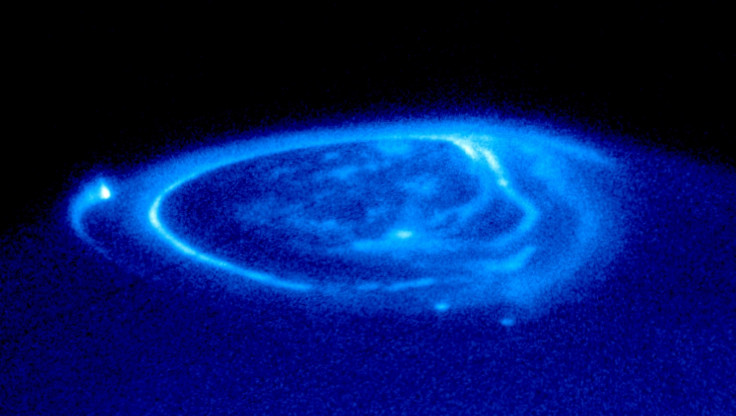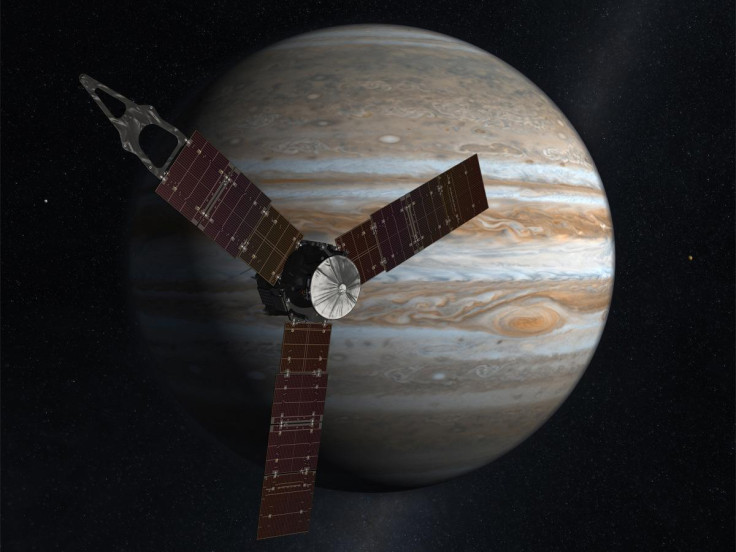Juno mission: Ten facts about the Nasa spacecraft speeding towards the gas giant Jupiter
Five years ago, a small spacecraft set out on a historic mission to Jupiter, a gas giant and largest planet in the solar system. Juno is now nearing the enormous planet, having travelled more than 1.74 billion miles since it was launched from Nasa's Cape Canaveral site in August 2011. As we countdown to the probe's arrival at Jupiter's orbit, IBTimes UK looks at ten key facts about the mission.
How fast is Juno travelling?
The spacecraft is moving at a velocity of around 60,000 miles per hour - or around 26.9 kilometres per second - relative to Earth. It is travelling approximately 15,000 miles per hour (6.7 kilometres per second) relative to the Sun, and around 13,000 miles per hours (six kilometres per second) relative to Jupiter.
Will it land on Jupiter?
No, but it will get closer to the planet than any other spacecraft. In July, the spacecraft will fire its main engine and slip into orbit around Jupiter to begin its scientific mission. It will orbit the planet more than 30 times over 12 months. According to Nasa, Juno will take 11 days to complete each orbit, while Jupiter spins every 10 hours.

When exactly will it reach Jupiter?
Juno is set to reach the planet's orbit on 4 July 2016.
What will Juno do?
The probe will use its instruments to study Jupiter's atmosphere, the layer of gases around the planet. It will map Jupiter's gravity and magnetic fields to find out more about the the interior structure of the giant planet. Nasa hopes to better understand the forces that control the planet's powerful auroras, described by one scientist as like the "Northern Lights on steroids".
Will it take pictures?
Yes - the spacecraft will carry a colour camera called JunoCam, which will take the first detailed pictures of Jupiter's brightly coloured poles.

Where does the spacecraft get its power?
Juno is powered by the Sun, with three large solar panels around its six-sided body.
Why is it called Juno?
The spacecraft is named after the Roman goddess Juno, the wife and sister of Jupiter. According to mythology, the god Jupiter was able to conceal his mischief with a veil of clouds, but Juno was able to see through them.
How will Juno survive Jupiter's intense radiation?
As Jupiter is surrounded by an intense radiation field, Juno will enter an environment with more radiation than any other areas visited by a Nasa spacecraft. Over the year the craft will spend investigating the planet, it will be subjected to a radiation dose equivalent to more than 100 million dental x-rays, according to one of the scientists working on the mission.

In order to withstand the huge dose of radiation, the spacecrafts instruments are protected inside a titanium vault. "Juno is basically an armoured tank going to Jupiter," said Scott Bolton, Juno's principal investigator said in 2010. "Without its protective shield, or radiation vault, Juno's brain would get fried on the very first pass near Jupiter."
Inside the vault, Juno's hardware will be exposed to radiation about 800 times less intense than outside.
What will happen to Juno?
After one year of orbiting Jupiter, Juno will be de-orbited and burn up in the planet's outer atmosphere.
Is Juno one of a kind?
Juno is one of three New Frontiers probes that Nasa has built. One is New Horizons, which flew past the planet Pluto last year, and the other is OSIRIS-REx, which will study the asteroid 101955 Bennu and collect a sample of the Apollo asteroid to bring back to Earth.
© Copyright IBTimes 2025. All rights reserved.






















